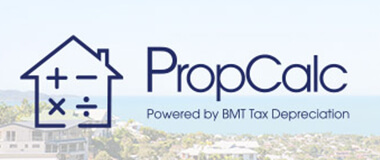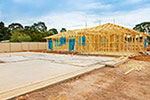How scrapping boosts cash flow – a close look at retail
Smart visual merchandising turns prospects into buyers. Improving the aesthetic appeal of a store will not only attract clientele but keep them in the store and encourage them to buy.
Think of the ambience of a luxury car dealership showroom. Clever visual merchandisers will use beautiful marble, lighting and furniture to create a feel within the showroom that reflects the lifestyle which the car promises to fulfil.

Given that visual merchandising is so important for success, it’s common for retailers to upgrade their building fit-outs regularly. Sometimes a commercial property will have been through numerous fit-outs and refurbishments, so stripping back all the layers to reveal the original shell may be the best option. This is known as bringing a property ‘back to base’.
Because upgrades to fit-outs occur frequently, the removed assets are often still within their effective lives and may even hold years’ worth of unclaimed depreciation deductions. Once the owner removes these assets, they can ‘scrap’ them and claim the unclaimed depreciation and capital works as a tax deduction.
What is scrapping?
Scrapping value is essentially the un-claimed or un-deducted depreciable value of an asset at the time of removal. The scrapping value is calculated as follows:
Scrapping value = original depreciable value – deducted value to date
For example, if the original value of an asset was $5,000, and $2,000 in depreciation was claimed by the time of the asset’s disposal, the ‘scrapping value’ would be $3,000. The owner could then claim the $3,000 as an instant tax deduction in the same financial year as removal.
Case study: Clothing retailer
The following case study is based on a 400 square metre clothing store where the owner has updated the fit-out after three years. Since the owner claimed for the removed assets, they were able to recoup almost $130,000 in depreciation deductions and ultimately boost cash flow.
| Item | Original Construction/asset | Depreciation claimed over 3 years | Remaining undeducted value |
| Capital works | |||
| Cabling | $12,000 | $900 | $11,100 |
| Wall paneling | $25,000 | $1,875 | $23,125 |
| Suspended ceiling | $40,000 | $3,000 | $37,000 |
| Plant and equipment | |||
| Carpet | $30,000 | $17,344 | $12,656 |
| Counters, freestanding | $15,000 | $7,320 | $7,680 |
| Lights | $16,000 | $10,922 | $5,078 |
| Partitioning | $20,000 | $5,420 | $14,580 |
| Shelving | $50,000 | $34,130 | $15,870 |
| Signs | $8,000 | $5,461 | $2,539 |
| Total | $216,000 | $86,372 | $129,628 |
Depending on lease conditions, if a tenant vacates a building and does not remove the retail fit-out from the building, the owner of the property may be able to claim the remaining depreciation for these items.
The Australian Government has also extended its temporary full expensing incentive to June 2023, which was introduced to support businesses and encourage investment from the effects of COVID-19. This means that business owners have a unique opportunity where they can accelerate deductions by writing off both the ‘scrapped’ value of assets as well as the total amount of new plant and equipment assets. Businesses with an aggregated turnover of less than five billion dollars are eligible for temporary full expensing.
BMT Tax Depreciation has optimised its commercial process to ensure clients claim the most deductions possible. It’s important to talk to BMT before removing any items so they can capture the assets available for depreciation deductions.
To learn more about how scrapping can improve your business’s cash flow contact BMT on 1300 728 726 or Request a Quote.



























